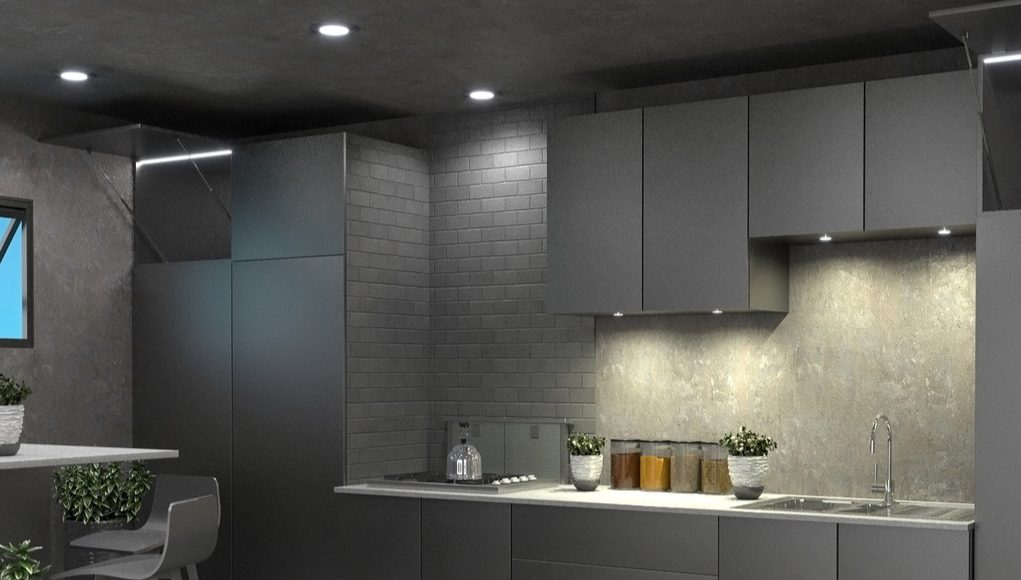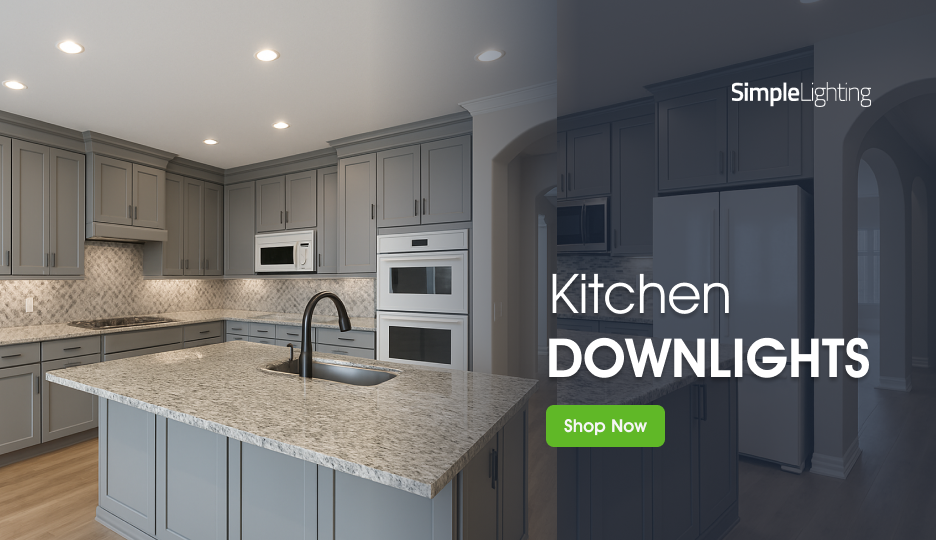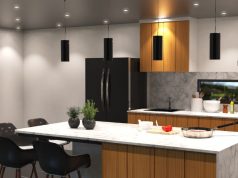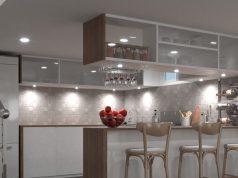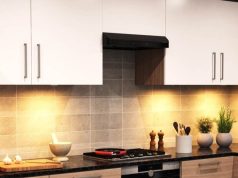Kitchens are funny places. They’re part restaurant, part lab, part family therapy office.
Yet most of them are lit like dingy garages. One sad bulb in the middle, casting shadows everywhere, and suddenly you’re chopping vegetables like a contestant on a survival show.
If you actually want your kitchen to function (and look like it belongs in 2025, not 1975), you need two things: zones and layers. It’s like giving your space a personality upgrade.
What Are Kitchen Lighting Zones?
Zones are simply different activity spots in your kitchen. And as it happens, each one deserves its own spotlight.
Why? Because the way you dice onions isn’t the way you sip wine. Cooking, eating, and sneaking biscuits at 11 pm all require different lighting moods. If you use the same glare for all three, you’ll either feel like you’re under interrogation or cooking in a cave. Neither is chic.
Breaking Down the Three Main Lighting Types
You can’t talk zones without knowing your lighting trio:
Ambient Lighting
- The background glow. It fills the room and stops you from walking into cupboards.
- Think ceiling fixtures, fire-rated downlights, or panel lights.
- Functional, but not enough on its own. Like toast without butter.
Task Lighting
- Bright, focused light for actual jobs like chopping, cooking, and washing.
- Under-cabinet LEDs and directional spots are classics.
- Without it, you’re basically gambling with your fingers.
Accent Lighting
- Pure theatre. Highlight what you want to show off.
- Lit shelves, plinth strips, or even a glowing splashback.
- Does it help you cook pasta? No. Does it make you look fancy? Yes.
You need all three, or your kitchen ends up feeling half-baked.
Mapping Zones in a Kitchen Layout
Now, let’s put those lights where they belong:
Prep Areas
This is where you chop and mix. Under-cabinet lights are lifesavers here. No one likes shadows on a chopping board.
Cooking Stations
Hob and oven need bright, focused task lights. Overhead spots work best. Guessing if chicken is cooked isn’t a fun game.
Dining Spaces
Pendants or chandeliers set the scene. Add dimmers so you can move from “family breakfast chaos” to “romantic dinner” without drama.
Storage Zones
Pantries, larders, and even deep drawers deserve strips or motion sensors. Because finding spices shouldn’t involve a head torch.
Sink Zone
A light here is underrated. Washing dishes in the shadows is a punishment, not a chore.
A floor plan with glowing highlights would show it all. No dark corners, no guesswork.
How Zoning Improves Function and Style
Zoning isn’t a luxury; it’s survival. Here’s why:
- Better visibility. No more squinting at recipes or slicing thumbs instead of cucumbers.
- Safety upgrade. Hot pans + sharp knives + poor lighting = A&E visit.
- Aesthetic win. A zoned kitchen looks deliberate, not cobbled together.
- Mood control. Want MasterChef energy? Or a soft glow for gossip over wine? Zoning lets you switch.
In other words, it makes your kitchen practical and fabulous.

How to Layer Light for a Complete Kitchen Design
Layering is where zones come to life. It’s about mixing ambient, task, and accent lighting until your kitchen feels complete.
Imagine you’re dressing up. Ambient is your shirt. Task is your trousers (essential, hopefully). And accents are the accessories that make people notice.
Skip one, and the outfit feels wrong. Combine all three and suddenly you’ve got style.
Combining Ambient, Task, and Accent Lighting
Now let’s look at how layering plays out in kitchens of different sizes:
Small Kitchens
- Ambient. One flush ceiling light, maybe two spots.
- Task. Under-cabinet LEDs are your new best friends.
- Accent. A pendant or glowing shelf adds a touch of charm.
- Tip: Stick with brighter lights; they make the room feel bigger.
Medium Kitchens
- Ambient. A neat grid of downlights or a couple of pendants.
- Task. Spotlights over the hob, sink, and main counters.
- Accent. Plinth lights or lit shelves.
- Tip: Add dimmers. Nobody wants interrogation vibes at 10 pm.
Open-Plan Kitchens
- Ambient. Multiple pendants, maybe even a chandelier over the island if you’re feeling dramatic.
- Task. Track lighting and LED strips for counters.
- Accent. Cabinet lights, wall washers, or even a cheeky neon sign.
- Tip: Use smart controls. That way, you can switch from “family breakfast chaos” to “cocktail night chic” with one tap.
The overall goal is balance. That means no zone ignored and no layer screaming louder than the others.
Common Mistakes to Avoid with Layered Lighting
Plenty of kitchens get layering wrong. Here’s what not to do:
- Over-lighting. Bright enough to land planes? That’s not chic. That’s painful.
- Under-lighting. Cosy is fine, but if you can’t see the pasta boiling, it’s a fail.
- Clashing colours. Warm amber here, icy blue there, and your kitchen suddenly feels like two different restaurants fighting for attention.
- Everything on one switch. Amateur move. You need circuits, zones, or smart controls. Otherwise, layering doesn’t exist; it’s just “on or off.”
- Forgetting dimmers. Lights with just one brightness are as flexible as a brick. Dimmers save the day.
Product Categories Worth Considering
A well-layered kitchen isn’t just a dream; it’s a shopping list. Here’s where to start:
- For ambient lights, get flush mounts, pendants, and recessed LED downlights.
- For task lights, we recommend under-cabinet lights, spotlights, and adjustable tracks.
- For accent lighting, use plinth LEDs, LED tapes, and wall washers.
Additionally, consider getting dimmers, sensors, and smart bulbs for flexibility. And since you’re splashing out, go smart. Being able to say, “Alexa, give me dinner party lighting”, beats running around flicking switches.
Light Your Kitchen Like You Mean It
Zones and layers can make all the difference in your kitchen, keeping it practical, safe, and stylish.
Ambient lighting sets the mood, task lighting keeps your work clear, and accent lighting adds drama. Pair them with dimmers for flexibility and stick to consistent colours to avoid chaos.
For lighting that looks good and works even better, check out Simple Lighting. From sleek under-cabinet strips to smart controls and statement pendants, we’ve got everything you need to turn a gloomy kitchen into a bright, inviting space.
And if you’re looking for more kitchen lighting recipes, check out Choosing the Best Lighting for Your Kitchen.


